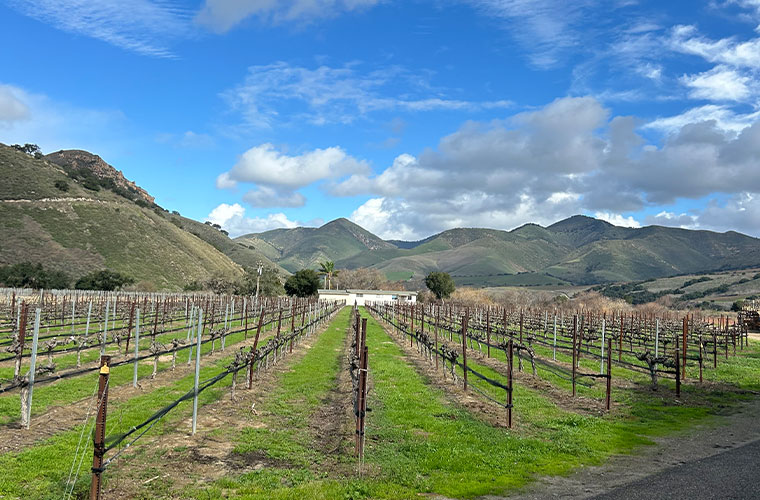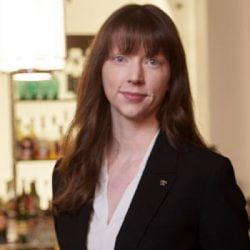Jeremy Kibalo claims to have been the furthest from a wine enthusiast when he began his hospitality career in his twenties in the New York City bar scene. When he was thirty, he moved to Los Angeles and nabbed a job at Crustacean as a manager. “I had a French boss at the time, and he opened up a bottle of J.L. Chave 2007 Hermitage,” he said. “I remember exactly where I was. It literally blew my mind. It opened something inside of me I didn’t know I had and, to this day, I’m still a staunch syrah man.” Kibalo earned his Certified Sommelier pin through the Court of Master Sommeliers, then became the General Manager of Hollywood’s historic Musso & Frank. “It was sort of liquor-focused and I went there and changed that narrative; I put some killer wines on the list and built out their program.” Today, Kibalo is the Wine Director for San Diego’s Puffer Malarkey Collective, which includes Asian steakhouse Animae and Mediterranean Herb & Wood. —Alissa Bica


What are your personal favorite wine categories?
It goes without saying that French syrah is the star of my life. Cornas is my favorite of all time. I have the Domaine Courbis Champelrose, which is a single vineyard. I also have a smaller producer, Johann Michel. That is the one that I feature at Animae, which is a kind of micro-vintner series. It’s incredible. I love that the grape is the star. The older I get, the more I want just less of everything else around it. It’s tannic without being overwhelming. I always equate French syrah to that tight tracksuit that you put on. You’re like, “Oh, my God, I can’t fit into this.” Then in 20 minutes, “Oh, my God. I do.” It’s like velour.
I also love cabernet franc from Tuscany. I’m loving wines from Bolgheri—I feel like that is the same sort of climate as Sonoma, there’s just that marine layer. Mark my words, the best cabernet franc in the world is going to be coming out of Tuscany in the next ten years. Underrated varietal, in my mind, way better than cabernet sauvignon.
But I have started to fall in love with a California wine again, when I didn’t think that was a thing I could do. Just traveling up and down the coast and falling back in love with California. I’ve just been drinking Italian and French wine for so long; you forget what we have here.
I mean, go to Santa Barbara and try to find a winemaker that is not using French winemaking practices. Santa Barbara wines are it for me. I have a special relationship with Au Bon Climat. It’s the first decision I made , to pour L’Bauge Au-dessus Pinot Noir by-the-glass. I got fight from every boss I had, saying that a 23-dollar pinot is too expensive for our restaurant group. But I decided to push on, and we sell more of it than anyone in the country. After three months, I decided to go up there and see if I could make it more exclusive. Where’s this wine coming from? What row of vines? Three years later, we now have a PMC Block of land at the winery with pinot noir grown just for us and our own label. We sold 300 cases over the last year. They opened their hearts to us. I can’t imagine a family winery that I would want to shout out more.


Is there a category that has done particularly well?
Dry white wines are the future. I probably sell more chenin blanc and grüner veltliner than anybody in San Diego. I pour both of those by-the-glass at two of my three locations, and they are literally my leaders right now every day. I would pick a grüner to drink with absolutely anything that’s not red meat—it goes with everything. So, whenever anyone wants a sauvignon blanc, I let them know that we have a weird one from New Zealand and its counterpart, which would be a grüner—high altitude, crispy and flowery instead of grassy. I’m learning with building the by-the-glass list that you can actually train the guests that come in. Instead of offering two types of something, you just offer one. Like for the sauvignon blanc, I don’t have a French one anymore. I don’t like where Sancerres are going. I don’t like how bright they are. I don’t think it’s the true representation and the prices have gotten crazy. What does that force me to do? It forces me to move into Austria. Or South African Chenin Blanc.
For chardonnay, we go to France, but I like to offer many chards from the Côte de Beaune. There are ways to get high-level wines that are not Puligny Montrachet, but maybe from Saint-Aubin or Saint-Romain. Or, I have an amazing Saint Joseph marsanne blend from Delas, the single vineyard Les Challeys. At Animae, I like to call this wine out for the left side of the menu. This is for our raw dishes, our tuna kinilaw. My favorite thing to eat with this wine is our Taiwanese fried chicken—you will freak out, it’s so good with this wine.
I think it comes down to a cost thing. The cost of going out is just so expensive these days. A lot of people that want to go out and have a bottle of wine, they can’t afford a 150-dollar cabernet. So, we must put them on to something that is gonna go better with their food and is half the price. Putting someone onto a Vouvray, Condrieu, or even a marsanne blend from Oregon—something they would never ever buy that’s under 70-dollars. It’s the only way that, in the future, our dining experience is going to exist.
Based in Los Angeles, California, Alissa Bica is the Associate Editor and Spirits Critic at Wine & Spirits. She is also a sommelier at 71 Above and co-runs the home wine tasting company, Côte Brune and Blonde. In any rare moments of free time, she writes about obscure grape varieties in the blog Off the Beaten Wine Path.
This is a W&S web exclusive. Get access to all of our feature stories by signing up today.




















